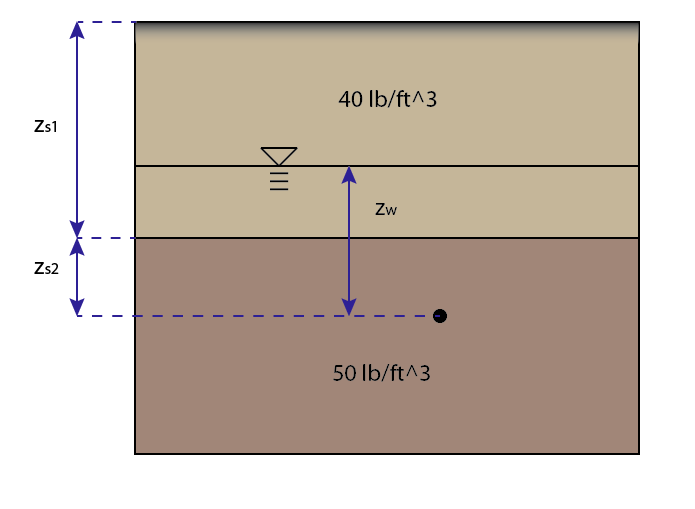Soil Mechanics – Effective and Total Stress
 Effective Stress, \(\sigma ‘\) is in units of pressure (Pa, \(\frac{kg*m}{s^2}\), \(\frac{F}{A}\), etc) and is given by this equation:
Effective Stress, \(\sigma ‘\) is in units of pressure (Pa, \(\frac{kg*m}{s^2}\), \(\frac{F}{A}\), etc) and is given by this equation:
$$ \sigma ‘ = \sigma – u$$
Total stress, \(\sigma\), is the total amount of stress due to the soil at the depth you are considering:
$$ \sigma = \rho_s g z $$
\(\rho_s\) is the soil density (e.g. 80 lb/ft^3).
\(g\) is the acceleration of gravity (e.g. 32.2 ft/s^2).
\(z\) is the distance of the surface, or beginning of the soil section, to the point you are considering(e.g. 10 ft).
Highway Superelevation
Superelevation is the banking of roads through turns so that the lateral forces on the vehicle balance out with the centrifugal force during the turn. Proper superelevation will allow a vehicle to safely turn at high speeds and will make riders comfortable.
From the AASHTO Green Book:
Urban areas the maximum superelevation is 4% to 6%.
Ice and snow areas the maximum is 6% to 8%.
Stopping Sight Distance
The stopping sight distance (SSD) is the total distance you travel during the time you (a) react to apply brakes, (b) apply brakes and actually begin to decelerate, and (c) vehicle comes to a stop.
Reaction time from AASHTO (\( t_R\)) is 2.5 s.
Default deceleration rate from AASHTO is 11.2 \(ft/s^2\)
The total distance traveled using these values on a straight path is:
$$ SSD = Vt_R + \frac{V^2}{2(a\mp gG)}$$
Vertical Curves
Vertical Curves are nice! I think they are easier to solve than Horizontal Curves because they are essentially parabola equations (which you should be very used to). This is the formula for vertical curves
$$ y(x) = y_{PVC} + G_1x + \frac{1}{2}Rx^2 $$
\(y(x)\) is the elevation y at x horizontal distance into the curve from the start position
\(y_{PVC}\) is the starting elevation at x = 0.


